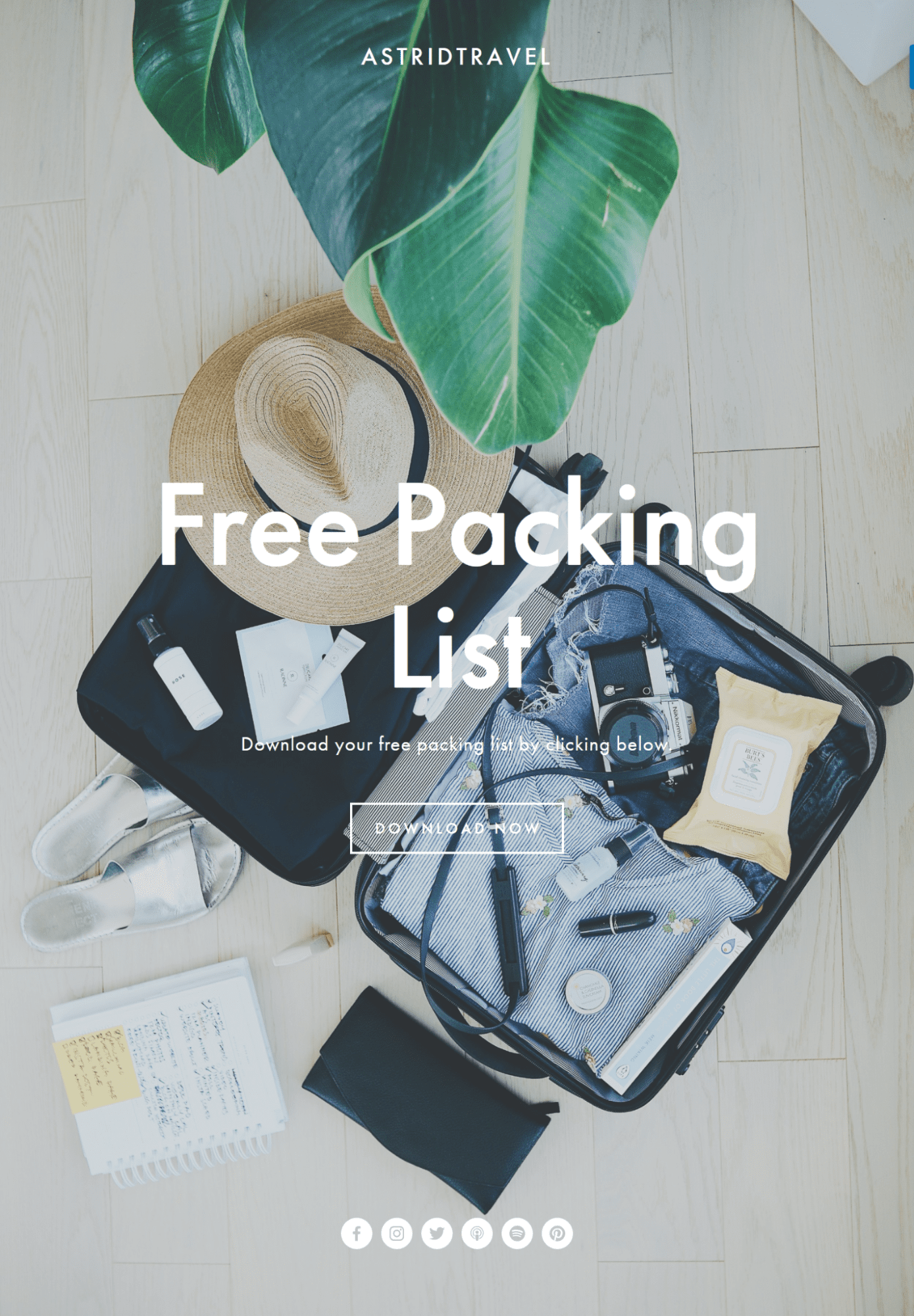What’s an Affiliate Marketing Funnel?
Affiliate marketing allows brands to market their products to much wider audiences leveraging the help of affiliates who promote these products on their websites, social media, and other platforms. Affiliate marketing funnel is a useful tool that helps marketers map the path that a user takes from discovering their website to making a purchase.
Developing an effective affiliate marketing funnel helps marketers turn their leads into loyal customers and sell more products. This strategy allows you to capture the attention of any user regardless of whether they are ready to buy or only want to explore for now. Based on a journey that a customer usually makes from discovering your website to a purchase, a sales funnel includes the following four steps:
- Awareness (Introducing your brand)
- Interest (Boosting audience’s interest in what you do)
- Desire (Presenting the benefits of your brand and products you promote)
- Action (Encouraging users to make a purchase)
Ultimately, affiliate marketing funnels help create a more powerful strategy and increase your return on investment.
Every efficient affiliate marketing funnel includes the following elements:
- Content. Blog posts and other types of content are a great way to share solutions to your audience’s pain points and help them solve problems. This can be a perfect context to introduce products you promote and drop affiliate links. Provided with keywords and SEO optimization, your content will also drive search traffic for years.
- Opt-in page. To not lose readers who have not made a purchase just yet, you can encourage them to sign up for a newsletter via an opt-in page. Later on, you can introduce more relevant affiliate products and alert users about upcoming campaigns and deals, as well as grow your customer base.
- Presell landing page. This is a connection between your blog or social media content and the product page that aims to convince the user to make a purchase by listing the benefits and features of a product. It can also include customer reviews, star ratings, and more. A compelling call to action (CTA) is an undeniable part of every presell landing page.
Why Do You Need a Sales Funnel in Affiliate Marketing?
Developing a sales funnel can help affiliate marketers achieve the following goals:
- Grow a subscriber base. Without a funnel, you are bound to drop affiliate links and hope for clicks. A proper sales funnel will walk the user till they make a purchase.
- Monitor your performance. By tracking clicks on every page and stage of the funnel, you can understand what resonates the most with your audience, and what needs improvement.
- Provide customer value at each step. Whether your reader wants to buy a product or just gather information, they can be equally important with a proper sales funnel. Even if a user is not ready to buy yet, the value that you bring might convince them to buy later.
- Build authority. By developing an affiliate marketing funnel, you will have to prepare and implement comprehensive marketing and content strategies, which will ultimately make you an expert in the niche.
How to Build a High Converting Affiliate Marketing Funnel in 6 Steps
To promote affiliate links efficiently, you need to develop and implement a comprehensive strategy. It should consider all visitors of your website regardless of their intent and offer value for each one of them. Thus you will be able to maximize your leads and increase conversions. Below, you will find six simple yet effective steps to build a high-converting affiliate marketing funnel.
1. Define Your Target Audience
First and foremost, you need to understand who your target audience is and tailor your funnel accordingly. This will allow you to produce on-point content, achieve marketing objectives faster, and reduce expenses. Targeting too broad of an audience is one of the bigger mistakes marketers can make.
Essentially, you want to understand what things your potential customers care about, what their pain points and frustrations are, what they hope for, and so on. Here are a few ideas on how to define your target audience:
- Use analytics tools
Today, there are many analytics tools that can provide invaluable insights about your target customer. For example, Google Analytics shares information about your page stats (views, bounce rate, number of monthly users, etc.), as well as your audience, including their demographics, interests, behavior, devices, and more. These reports will unveil your audience’s preferences so you can optimize your content and website accordingly.
- Run surveys
The simplest way to learn about your customers’ preferences is to ask them directly. You could create a short survey and offer an incentive in return to encourage user participation. An incentive could be a discount, a free trial for a product or service, a freebie, such as an ebook, and more. It is important that you limit your survey to the most important questions, start from the simplest ones, and use the language that your audience speaks.
There are many tools that can create a survey, such as SurveyMonkey, Typeform, or Hubspot. These solutions will help you build and run a survey in a couple of minutes.
- Diversify content
Some types of content will resonate better with your audience than others. To find what works best in your case, it is important to experiment and share various content forms, such as blog posts, checklists and listicles, videos, infographics, interviews, case studies, ebooks, white papers, and more.
This approach also helps present information better. For example, if you want to share statistics or complex data, it can be hard for readers to perceive it in the form of a blog post. A colorful infographic can help them understand the matter much faster and maybe even share with others.
- Track your performance
If you analyze your content strategy, you can get a better understanding of what resonates with your audience and improve your marketing strategy in the future. Make sure to check posts that have the highest amount of views, likes, comments, and shares and try to see what exactly attracted readers. For example, it could be a catchy headline, a long-form content, captivating visuals, and much more. Then you can use this as a template to create similar content in the future.
- Monitor competitors
Analyzing what your competition does can go a long way in improving your strategy. Thus, you can discover gaps in their strategies and improve yours, discover audiences you have not covered yet, or find out what marketing strategies or content types resonate the most with the reader in the niche. Learn more how to analyze your competitors’ audience in our special post.
- Create a buyer persona
A buyer persona is your average website visitor. By understanding who your audience is and creating a fictional character to relate to, you can build a more successful content marketing strategy.
To create a buyer persona, you need to understand the following features about your audience:
- Geolocation
- Demographics, such as their age, language, interests
- Behavior on your website
- Problems and pain points
- The way you can solve these problems
To learn more about how to understand your target audience, watch this video from Travelpayouts Academy.
2. Define Your End Goals
To build an affiliate marketing sales funnel efficiently, it is important to see the project in its entirety and understand your end goals. So, ask yourself: what action do you want your prospects to complete with your funnel? The goals can be, for example, as follows:
- Sell a specific product
- Grow a subscriber base
- Build an engaged community
- Introduce different affiliate products
Depending on what you want to achieve, you will build a sales funnel for your affiliate marketing campaign. For example, to encourage your audience to purchase a particular product, you will need to build a funnel with this product in mind.
3. Create a Lead Magnet
With a lead magnet, you can make or break your lead generation. Basically, a lead magnet is a value that you offer to leads in exchange for their contact information, such as email address. The purpose of a lead magnet is to maximize the number of leads on your website. Most often, lead magnets include freebies, such as an ebook.
The right lead magnet facilitates your marketing. An incentive that you offer will draw the user’s attention, start your relationship with them on a positive note, and encourage them to check your paid offers later on.
Here are a few tips on how to create a great lead magnet:
- Select your buyer persona
To choose the right lead magnet, you need to have your target customer in mind. Instead of a wide audience, you should concentrate on specific users that might be interested in offers you promote and provide value accordingly. For example, to attract users interested in travel offers, you may offer a free travel guide or a discount for a popular travel brand.
- Make a killer value proposition
Be sure to give your audience a compelling reason to subscribe to your email list, and then deliver on your promise. The best value proposition is something that your target audience really wants, so you won’t have to convince them. More expensive or bigger is not always better, so try to find a common problem among your potential customers and offer a quick solution.
- Choose a lead magnet
Now that you know the audience and what kind of value you could bring, it is time to choose an incentive. It is better to keep it simple so users are sure about your offer and it can bring value quickly. Such a lead magnet could be a guide or report, resource list, video tutorial, free trial of a product, discount, assessment, etc.
4. Build Your Landing Page
A landing page is an intermediary that helps present the product or service benefits and encourage the visitor to convert and make a purchase. Landing pages help achieve various goals, such as drive more conversions, gather leads, build an email list, and more, and are always designed with a specific purpose in mind.
Depending on the goal, there are following types of landing pages:
- A lead capture page aims to get as much information about the visitor as possible, such as their name, email, phone number, interests, and more.
- A product landing page presents benefits of a product or service and convinces the user to make a purchase. Oftentimes, such landing pages have detailed product descriptions, reviews, photos, and more.
- A getting started landing page helps newcomers navigate your website easier and faster.
Here are a few tips on how to create a landing page that converts:
- Focus on one offer
To make sure your landing page coverts, it is important to focus the content and call to action on one objective and one offer. Otherwise, you will be firing a cannon at sparrows by targeting a broad audience with several propositions. If you have quite a diverse audience, it is better to focus on one type then and tailor your page accordingly.
- Write a catchy headline
Research shows that 8 out of 10 people will just skip content if the headline is not captivating enough. This means that your post title should be compelling enough to encourage the user to read the full text. Ideally, the headline should introduce the offer and let the reader understand that your page contains the very answer they are searching for.
- Go for a clear and simple copy
To attract and convert your target customer, it is important to show them the value. Using simple and clear wording can go a long way in captivating your audience, because they will focus on what is most important. On the other hand, long and complicated sentences can only bore or confuse readers.
It is also important for a landing page to contain as little content as possible provided that it is enough to introduce your offer. Focus on showing benefits of your products and putting them into simple yet descriptive sentences.
- Add an CTA
A call to action is a word or sentence that encourages the reader to take an action. A CTA is an undeniable part of every high-converting landing page as it sums up the page content and engages the user. The most efficient CTAs are usually buttons with one or a couple of words and of a contrasting color to the page content.
You can also create a sense of urgency by highlighting that your offer is limited in time, so the user will be motivated to click the link sooner. It is also possible to add a countdown clock to show that your offer will expire soon and encourage more conversions.

5. Create an Email Sequence
An email sequence is a series of emails that are sent to the user in a particular order. Marketers usually automate such a sequence with the help of email marketing tools to take the weight of routine tasks off their shoulders. The length and duration of an email sequence can depend on your customer, their stage in the marketing funnel, your end goals, and so on.
Why is creating an email sequence so important for a successful affiliate marketing campaign? Sending out a newsletter helps stay top of mind for your readers and provide them with valuable information that can help solve their issues. It will also allow you to build authority and trust with the audience so they turn to you when looking for information in the future.
There are different triggers for an email sequence to be sent, such as a completed action, a topic, customer’s behavior or demographics, and so on. Thus, if a client fills out a sign-up form upon purchase, you will need to send a different email than you would send to a customer who stumbled upon your website for the first time.
Here are a few tips to help you create an email sequence that converts:
- Define your purpose
An email sequence that is too broad may not be able to focus the user’s attention enough to convert them. Context is crucial when it comes to delivering the right message at the right time. So it is very important to set an objective and define your target audience so every email in the sequence is on point and works for the same goal.
- Set your triggers
The next step is to define which user’s action will trigger the email campaign. It can be from signing up for a newsletter to visiting a particular page to making a purchase through your links. Email automation tools record such actions of users and can launch a corresponding email sequence.
- Choose the duration of the sequence
The right number of emails in your sequence will depend on various factors, such as the stage of the funnel, your objective, customer behavior on your website, and more. There is no set length or duration, but you might want to consider the best practices in the niche. For example, if you know that it takes about 30 days for your potential customer to convert, you can set up a sequence of eight emails sent twice per week.
6. Drive Traffic to Your Landing Page
To convert the visitor on your landing page, you need to drive as much targeted traffic as possible. To do this, you can diversify your traffic sources to cover a wider audience. For instance, you could promote your landing page with the help of:
- Ads. You could run paid search or social media ads, as well as display advertising. Paid ads allow marketers to achieve their objectives fast and ensure a significant and quick increase in traffic and leads. Adverts can also send you users with the purchase intention in contract to general search traffic, provided that you target the right keywords.
- Social media. Facebook, Instagram and other popular networks provide access to billions of users, so by creating a profile and growing presence of social media you can reach users that you would not reach otherwise.
- Content marketing. By creating comprehensive blog content, you can take advantage of search traffic and attract more leads to your landing page. It is crucial to understand what information your target audience might be interested in and deliver accordingly. For example, if you want to promote a travel offer, you can create travel guides or itineraries and send the interested visitors to your landing page.
- Keyword research and SEO. Search engine optimization allows you to drive more traffic from search engines, as you adapt your content according to the search best practices and rank higher in the SERP. Make sure to research which keywords your potential customer may use to look for a solution to their problem and insert these keywords in your text. To create SEO-friendly texts, you also need to ensure easy readability of your text so the user stays longer on your page and is more likely to convert.
To learn more about how to do keyword research in the travel niche and boost your affiliate marketing income, take a free course with Sharon Gourlay.
Monitor and Optimize Your Affiliate Sales Funnel
Building an affiliate marketing funnel does not stop at driving traffic to your offer. For the maximum results, it is important to track and optimize your processes and discover opportunities for improvement on a regular basis.
With the help of the best analytics tools, you can estimate how efficient your channel is at any given moment. For example, you might want to track the number of visitors that come to your page as well as the number of leads that click out to your offer to understand if your traffic is targeted and the landing page converts well.
Funnel optimization is also a common and efficient practice for many affiliate marketers. Basically, it consists in adjusting your strategy to improve the campaign performance. You need to collect enough data to implement efficient optimization. Here are a few ideas on how to improve your affiliate sales funnel:
- Focus on bringing value. You can only catch users’ attention and convert them into loyal customers if you bring real value and help solve their issues. Blog content, email newsletter, and the offers you promote all might help catch the attention of your audience and build trust with them.
- Nurture leads with email marketing. As captivating as your landing page can be, it often takes time before leads become customers. To stay top-of-mind for your potential customers, it can be efficient to send out a newsletter. You can share more relevant posts on the topic, introduce your business, and show benefits of the offers you promote by reaching leads directly in their mailbox.
- Be active on social media. The average time spent on social media amounted to 147 minutes per day in 2022 and keeps on growing. Staying active on social media can help you keep in touch with potential customers and grow your brand awareness. And you can also target leads at every stage of your affiliate sales funnel with the right social media strategy.
Conclusion
Building a successful affiliate sales funnel does not have to be complicated. Start by choosing the right offer to promote, which should be relevant to your target audience. Reflect on the end goals you want to achieve with your sales funnel and make sure that every stage leads the user towards taking that action. Before you send leads to the offer, drive traffic to a landing page that concisely and efficiently presents the offer benefits and alleviates concerns that users might have. Finally, be sure to track your affiliate funnel performance and optimize it for better performance to stay ahead of your competition.
If you’re looking to maximize your earnings potential and jumpstart your affiliate marketing journey, consider joining Travelpayouts. Travelpayouts offers access to over 100 leading travel brands and provides an array of promotional tools and educational resources to help you succeed. With Travelpayouts, you can monetize your travel-related content and take your affiliate marketing game to the next level.
Join the Travelpayouts partnership platform
Join todaybrands




